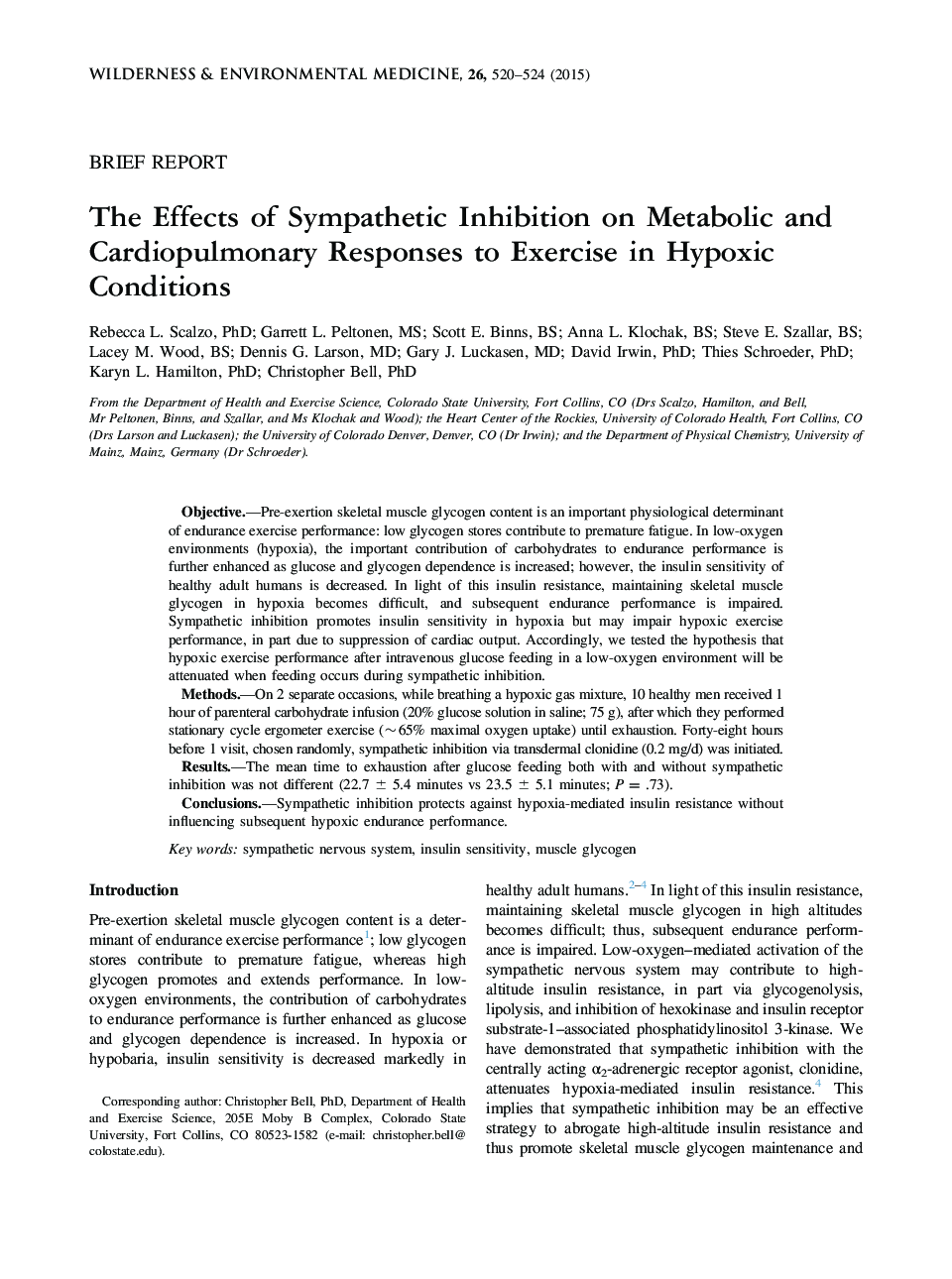| Article ID | Journal | Published Year | Pages | File Type |
|---|---|---|---|---|
| 2614197 | Wilderness & Environmental Medicine | 2015 | 5 Pages |
ObjectivePre-exertion skeletal muscle glycogen content is an important physiological determinant of endurance exercise performance: low glycogen stores contribute to premature fatigue. In low-oxygen environments (hypoxia), the important contribution of carbohydrates to endurance performance is further enhanced as glucose and glycogen dependence is increased; however, the insulin sensitivity of healthy adult humans is decreased. In light of this insulin resistance, maintaining skeletal muscle glycogen in hypoxia becomes difficult, and subsequent endurance performance is impaired. Sympathetic inhibition promotes insulin sensitivity in hypoxia but may impair hypoxic exercise performance, in part due to suppression of cardiac output. Accordingly, we tested the hypothesis that hypoxic exercise performance after intravenous glucose feeding in a low-oxygen environment will be attenuated when feeding occurs during sympathetic inhibition.MethodsOn 2 separate occasions, while breathing a hypoxic gas mixture, 10 healthy men received 1 hour of parenteral carbohydrate infusion (20% glucose solution in saline; 75 g), after which they performed stationary cycle ergometer exercise (~65% maximal oxygen uptake) until exhaustion. Forty-eight hours before 1 visit, chosen randomly, sympathetic inhibition via transdermal clonidine (0.2 mg/d) was initiated.ResultsThe mean time to exhaustion after glucose feeding both with and without sympathetic inhibition was not different (22.7 ± 5.4 minutes vs 23.5 ± 5.1 minutes; P = .73).ConclusionsSympathetic inhibition protects against hypoxia-mediated insulin resistance without influencing subsequent hypoxic endurance performance.
